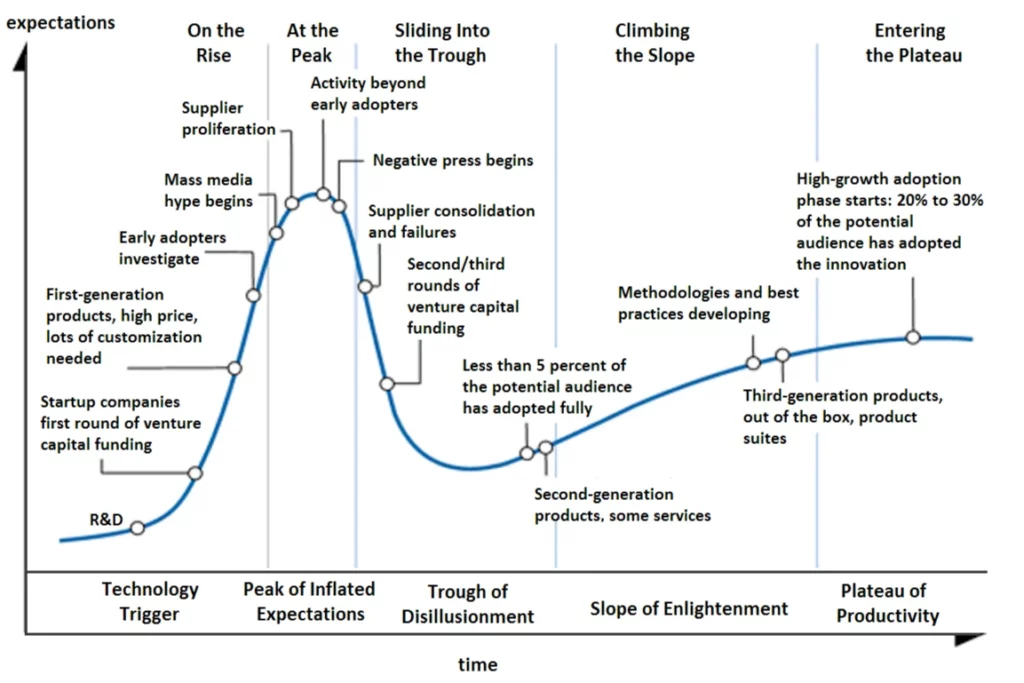Developing an understanding of how new technologies needs to placed in the context of how humans tend to interact with those technologies.
In early nineteenth century Great Britain the textile industry was going through a process of rapid mechanisation. The ‘Luddite Movement’ grew as a reaction by manufacturing workers to the change wrought by mechanisation with the fear of jobs being lost or downgraded. Luddites used the destruction of the new machines as a key tactic in their campaigns.
Two hundred years later ‘neo-Luddism’ is the term used to describe opposition to many forms of technology.
Alongside the Luddites are the doomsayers who predict the end of the world as we know it due to the latest technological innovation. The extraordinary noise around Artificial Intelligence is but the newest example (see ‘Amusing ourselves to death’ by Neil Postman and ‘Future Shock’ by A and H Toffler).
Another ‘reaction’ to new technologies is ‘hype’ or over exaggeration of the benefits/changes to be wrought by a new invention.
The Gartner hype cycle is a graphical presentation developed, used and branded by the American research, advisory and information technology firm Gartner to represent the maturity, adoption, and social application of specific technologies. The hype cycle claims to provide a graphical and conceptual presentation of the maturity of emerging technologies through five phases.

Each hype cycle drills down into the five key phases of a technology’s life cycle:
| No. | Phase | Description |
|---|---|---|
| 1 | Technology Trigger | A potential technology breakthrough kicks things off. Early proof-of-concept stories and media interest trigger significant publicity. Often no usable products exist and commercial viability is unproven. |
| 2 | Peak of Inflated Expectations | Early publicity produces a number of success stories—often accompanied by scores of failures. Some companies take action; most do not. |
| 3 | Trough of Disillusionment | Interest wanes as experiments and implementations fail to deliver. Producers of the technology shake out or fail. Investment continues only if the surviving providers improve their products to the satisfaction of early adopters. |
| 4 | Slope of Enlightenment | More instances of how the technology can benefit the enterprise start to crystallize and become more widely understood. Second- and third-generation products appear from technology providers. More enterprises fund pilots; conservative companies remain cautious. |
| 5 | Plateau of Productivity | Mainstream adoption starts to take off. Criteria for assessing provider viability are more clearly defined. The technology’s broad market applicability and relevance are clearly paying off. If the technology has more than a niche market then it will continue to grow. |
If we put the doomsayers, the luddites and the ‘hype’ producers to on-side what is important here, and it’s a global issue, is to find the mechanisms to develop rules on how a new technology can be beneficially incorporated in our lives. If I follow the ‘hype’ I would say that this is without doubt one of the most critical challenges facing society in the 21st century.
Greg Black
18th Dec 2023
